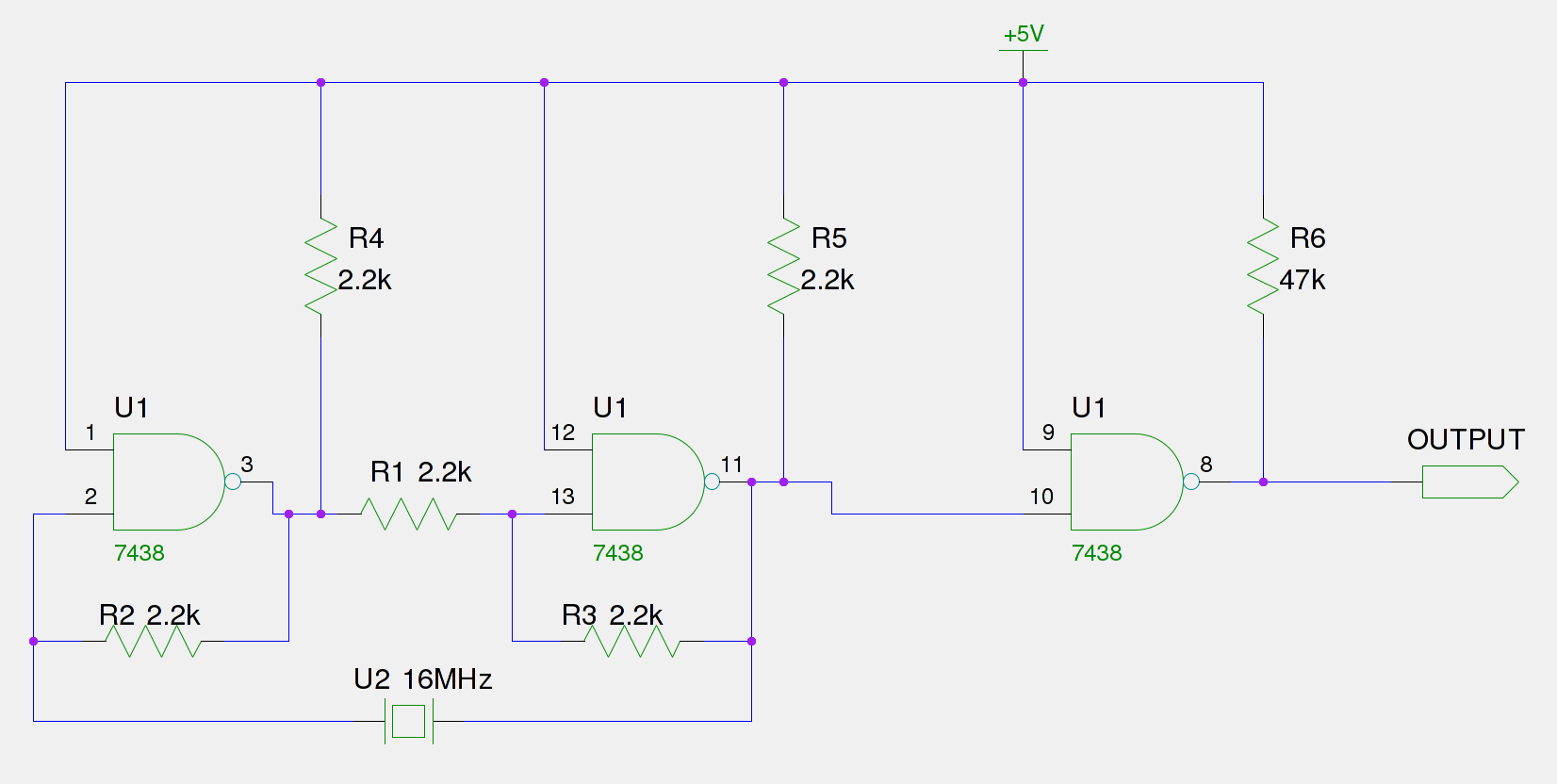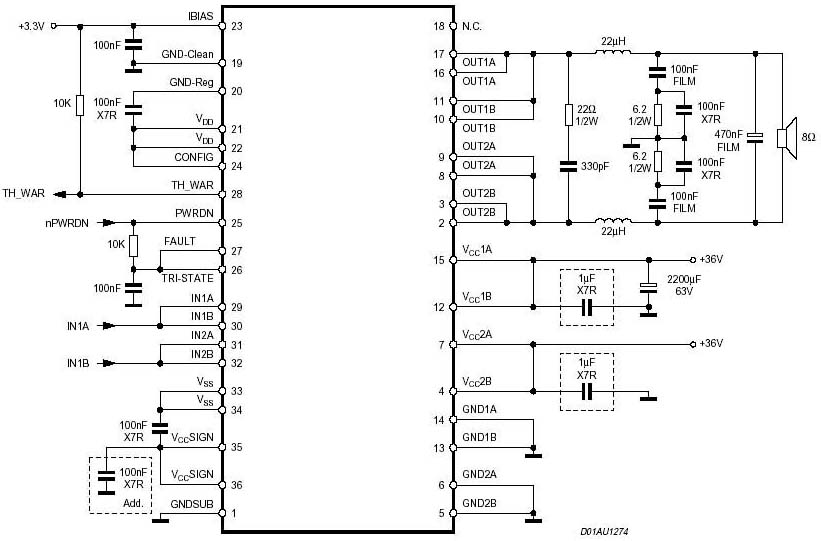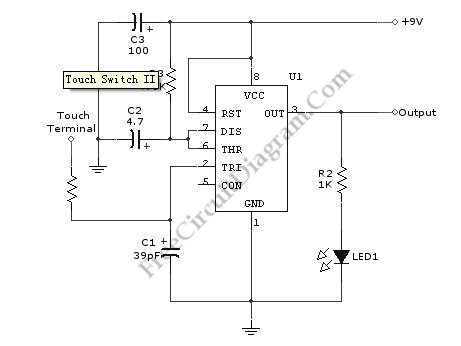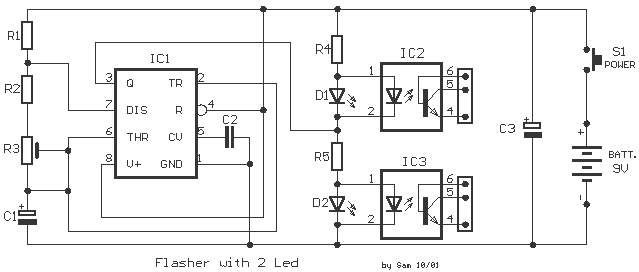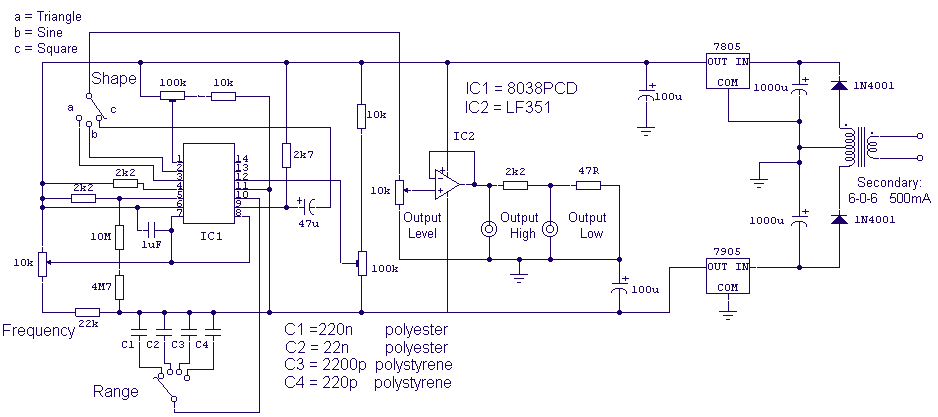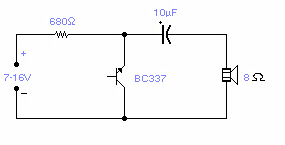
555 IC Oscillator with 50% Duty Cycle
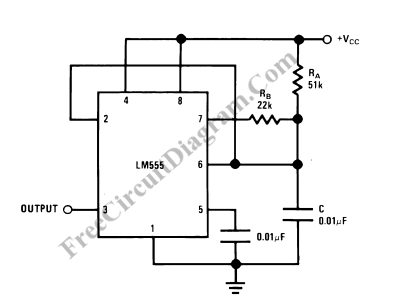
A square wave oscillator utilizing the 555 integrated circuit (IC) can be configured to produce symmetric oscillation with a 50% duty cycle. Additional circuit configurations employ diodes to separate the charging and discharging paths.
The 555 timer IC is a versatile and widely used component in electronic circuits, particularly for generating square wave signals. When configured in astable mode, the 555 timer can produce a continuous square wave output, where the frequency and duty cycle can be adjusted by selecting appropriate resistor and capacitor values.
For symmetric oscillation with a 50% duty cycle, the circuit typically includes two equal resistors (R1 and R2) connected to the discharge and threshold pins of the 555 timer, along with a timing capacitor (C1) connected to the ground. The output frequency (f) can be calculated using the formula:
f = 1.44 / ((R1 + 2R2) * C1)
In this configuration, the charge and discharge times are equal, resulting in a 50% duty cycle.
In addition to the basic 555 oscillator setup, the use of diodes can enhance circuit functionality. Diodes can be incorporated to create distinct charging and discharging paths for the timing capacitor. This allows for greater control over the timing characteristics of the oscillator, enabling variations in duty cycle while maintaining the overall oscillation frequency.
For instance, one diode can be placed in series with the resistor connected to the discharge pin, while another diode can be connected to the resistor linked to the threshold pin. This arrangement allows the capacitor to charge through one path and discharge through another, effectively modifying the duty cycle without altering the frequency significantly.
In summary, a square wave oscillator using the 555 IC can achieve symmetric oscillation with a 50% duty cycle through careful selection of resistor and capacitor values, while the incorporation of diodes provides additional flexibility in managing the charging and discharging processes.A square wave oscillator using 555 IC can be configured to give symmetric oscillation (50% duty cycle). Other circuit uses diodes to split the charging and the. 🔗 External reference
The 555 timer IC is a versatile and widely used component in electronic circuits, particularly for generating square wave signals. When configured in astable mode, the 555 timer can produce a continuous square wave output, where the frequency and duty cycle can be adjusted by selecting appropriate resistor and capacitor values.
For symmetric oscillation with a 50% duty cycle, the circuit typically includes two equal resistors (R1 and R2) connected to the discharge and threshold pins of the 555 timer, along with a timing capacitor (C1) connected to the ground. The output frequency (f) can be calculated using the formula:
f = 1.44 / ((R1 + 2R2) * C1)
In this configuration, the charge and discharge times are equal, resulting in a 50% duty cycle.
In addition to the basic 555 oscillator setup, the use of diodes can enhance circuit functionality. Diodes can be incorporated to create distinct charging and discharging paths for the timing capacitor. This allows for greater control over the timing characteristics of the oscillator, enabling variations in duty cycle while maintaining the overall oscillation frequency.
For instance, one diode can be placed in series with the resistor connected to the discharge pin, while another diode can be connected to the resistor linked to the threshold pin. This arrangement allows the capacitor to charge through one path and discharge through another, effectively modifying the duty cycle without altering the frequency significantly.
In summary, a square wave oscillator using the 555 IC can achieve symmetric oscillation with a 50% duty cycle through careful selection of resistor and capacitor values, while the incorporation of diodes provides additional flexibility in managing the charging and discharging processes.A square wave oscillator using 555 IC can be configured to give symmetric oscillation (50% duty cycle). Other circuit uses diodes to split the charging and the. 🔗 External reference
Warning: include(partials/cookie-banner.php): Failed to open stream: Permission denied in /var/www/html/nextgr/view-circuit.php on line 713
Warning: include(): Failed opening 'partials/cookie-banner.php' for inclusion (include_path='.:/usr/share/php') in /var/www/html/nextgr/view-circuit.php on line 713
